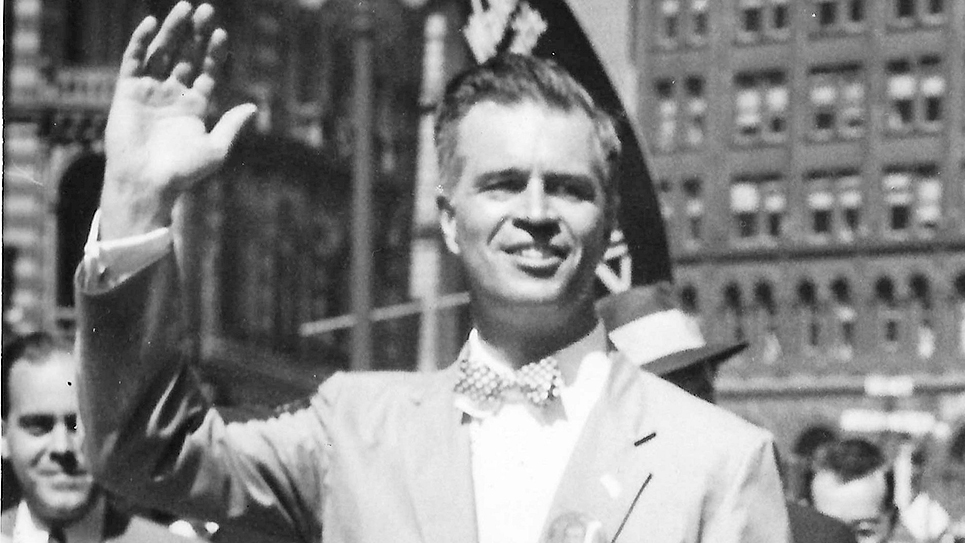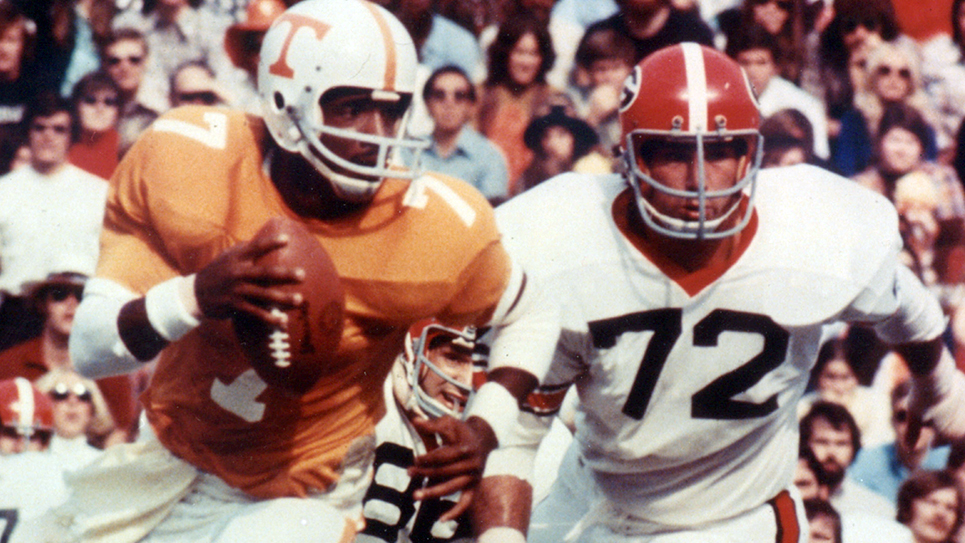The decade of the 1950s was an exciting one for Tennessee fans
By Tom Mattingly
In 2007, Sports Illustrated named Tennessee the “Team of the Decade” for the 1950s as the Vols compiled a 72-31-4 record overall, 38-20-4 in the SEC, and earned a consensus national title in 1951. There were two SEC titles (1951 and 1956) and two Heisman runners-up (Hank Lauricella in 1951 and John Majors in 1956).
The Vols were 7-1-2 against Alabama during that time frame, shutting out the Tide five times in 10 years.
Gen. Neyland’s final three years as head coach brought a 29-4-1 record, with three bowl games. The 1955 season brought the return of a Tennessee folk hero —1938 Vol captain and All-American selection Bowden Wyatt — as head coach.
That was balanced against losses to Auburn (the Vols failed to make a first down), Chattanooga, and Florida State in 1958 and not-so-hot seasons in 1953 and 1954, after Neyland had stepped down as head coach.
No decade better symbolizes the ups and downs inherent in college football than Tennessee’s seasons from 1950 through 1959.
In 1959, Tennessee was coming off a 4-6 mark that made Vol partisans uneasy about the prospects for the coming years.
What lay ahead was a season marked by two “highs” — victories over the previous national champions (Auburn and LSU) — and three “lows,” consecutive losses to conclude the season and the decade.
In September, the Vols, still smarting from the 13-0 loss to Auburn a year earlier, won 3-0 on Shields-Watkins Field on Cotton Letner’s 20-yard field goal in the second period. It was a second chance for the junior from Ten Mile, who had missed one earlier in the quarter.
Bill Majors, a marvel in the secondary, picked off two passes, while Neyle Sollee added a third that thwarted the final Auburn scoring drive.
When LSU came to town for Homecoming on Nov. 7, Vol fans in the know were convinced, perhaps instinctively, that the Vols would win.
There were signs around campus that read, “LSU, who are you? You won’t be first when the Vols get through.”
LSU led 7-0 at intermission, with the Tigers boasting a streak of 40 quarters since the LSU goal line had been crossed. That lead looked rock-solid until Tiger quarterback Warren Rabb tossed a pass in the flat toward running back Johnny Robinson. Vol linebacker Jim Cartwright intercepted and returned the theft 59 yards for a touchdown.
Newspaper reports indicated that Cartwright’s theft woke up the “tomb-like stadium.”
When the Vols recovered a fumble, and Neyle Sollee ran 14 yards for a score to make the count 14-7, Vol fans were back in the game in a big way.
After a punt took a big bounce and hit Majors on the shoulder, LSU recovered and scored to close the gap to 14-13 early in the fourth quarter. Head coach Paul Dietzel decided to go for two and the lead, probably the win, even though there was an eternity of time remaining.
Former LSU head coach Charley McClendon, an assistant that day, said years later there was no doubt Cannon would get the ball on the two-point play. “We’d have been run out of the state of Louisiana had we not given the ball to Cannon. Can you imagine what would’ve happened had we given the ball to someone else and not made it?”
Cannon, the 1959 Heisman trophy winner, got the pigskin on a sweep to the east side of the field. The play had been diagrammed earlier in the week in a Knoxville newspaper, and it appeared Cannon would walk into the north end zone.
Cannon did get the ball, and Wayne Grubb of Athens, Majors of Sewanee, and Charley Severance of Knoxville, were there, on a play known historically as “The Stop.”
Legend has it that this play decided the game. LSU did actually have three legitimate shots to win afterward but was stymied each time. Jack Kile recovered a fumble and Cartwright had another pick, as Vol defenders simply refused to yield.
The end of the season and the decade were not what the doctor ordered for the Vol program. After a close first half, Ole Miss won 37-7. Kentucky won 20-0 at Stoll Field, and Vanderbilt won its first game in Knoxville in 22 years with a 14-0 triumph.
A 5-1-1 season thus turned into a 5-4-1 campaign just like that.
There was a 6-2-2 record in 1960, a 6-4 record in 1961, and 4-6 in 1962. The winds of change were swirling around the program.
That change would happen in December 1963 with the hiring of Doug Dickey.
The single-wing would be out, and the “T” formation in. In the years that followed, the Vols became one of the nation’s finest programs, bringing excitement to Vols fans wherever the Vols played.






